TRICK OF THE TRADE CORNER: Tying to Prevent Footing Spread
This issue’s Trick of the Trade response to the president’s challenge is shared by Jason Ells of Custom Concrete in Westfield, Indiana. Jason has worked with his company’s residential foreman to identify and understand this simple solution they offer to the industry. Jason’s tip has rewarded his company’s member account with 50 points redeemable in an upcoming registration, event or purchase. Member or not, your tip can earn you recognition and reward here with your peers. Non-members receive a discount to a full membership.
The Problem:
Often when pouring footings, our footing forms would spread—causing us to use more concrete than needed. Also, the edges of the footing would look wavy and crooked. This was especially a problem when the footing was wider or taller than normal or when the soil was soft or sandy.
Possible solutions we identified and attempted include:
1. Compensate by forming the footing a little narrower with the anticipation of spread. It was a good first thought; however, two new problems were created: the footing might not spread as much as we would need to meet our desired width, and the inspector would occasionally measure the footing and require adjusting before the pour.
2. Place more footing stakes to create more forming resistance.This definite physical solution immediately increased work in other areas of the project, including more stakes to purchase, more stakes to deliver to and scatter at the job, and more stakes to drive and pull.
3. Install a wood brace across the top of the forms. Another legitimate physical solution, but the added problems included: it is difficult to finish around and under the braces; more cutting and nailing labor was required; there was an increased number of form pieces (labor) to strip; and more lumber was required for purchase on each project.
The Solution:
After trying several of these methods and several others not mentioned, we came up with a solution that works quite well, with some added benefits.
We started installing two wires underneath our form boards at each stake. We wrap the wire around the stakes at least twice to ensure that the wire does not slip while pouring concrete. Also, we ensure that we have enough wire on both sides of the footing boards so that once stripped, we can use the wire to tie up the tile next to the footing.
Reasonable Benefits:
• Reduces/eliminates footing spread
• Speeds up install of tile
• Ensures gravel is placed under the tile (tile is not sitting on the ground/mud)
• Prevents the tile from “walking away” from the footing while placing aggregate
• Creates a very clean look
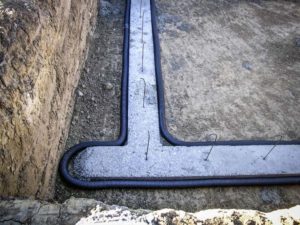
The planned result is consistent footing widths with clean intersections and straight runs using fewer stakes and less time.

An afterthought benefit, the end result is a completed drainage solution secured to concrete footings.


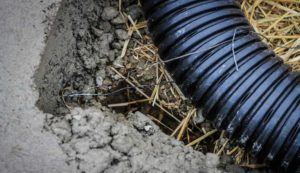
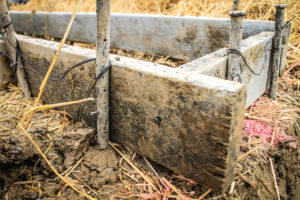
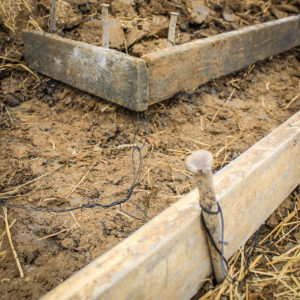
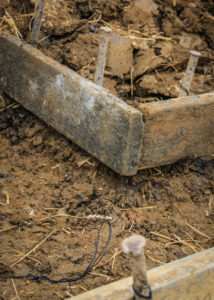

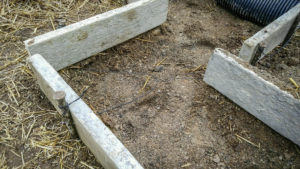
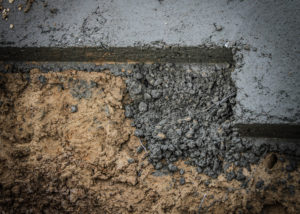
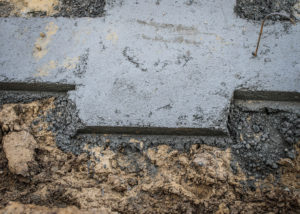
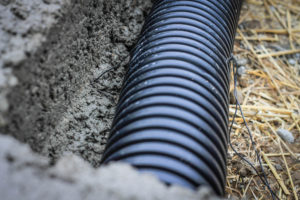










I’ve been preping and pouring residential and commercial concrete for 31 yrs drain tile has been a pain in my ass since I was 13 yrs old preping basements with the old timers every summer will out of school this is such a cheap little bit of extra time idea I’ve seen thanks my concrete comrades
Why not eliminate forming boards and drain tile altogether by using Form-A-Drain, the proven engineered solution that forms, drains, and vents footers? This cost-effective system eliminates the need for drain tile and forming boards includes spacer bars to eliminate spread and ensures that the drainage stays at the footer where you need it. Best of all, no form stripping is required. Please see our ad in this edition of Concrete Facts or contact us at 713-325-0642 royalbuildingproducts.com